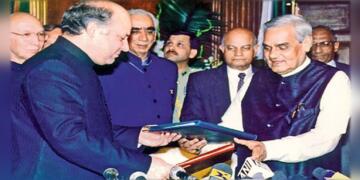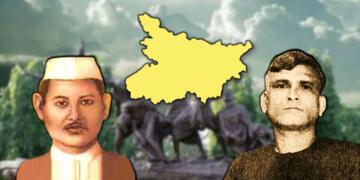Have you heard of the Bollywood film, ‘Page 3’? It is about tabloid journalism, gossip and celebrities. This film exposes the lives of so-called celebrities and their distasteful and repulsive lifestyle. It also exposed the dirty dark secrets of the media and entertainment business. It further gave a glimpse to the dark business of sensationalism and paparazzi culture.
In the film, Madhavi – played by Konkona Sen Sharma – aspires to become a successful journalist. However, she ends up being pushed to cover celebrity gossip and write articles for Page 3, which is dedicated to tabloid culture.
Notably, these so-called famous personalities stoop to any level to get fame and money. They even exploit the miseries of other persons to get traction and content for their malicious agenda and profiteering.
Tabloid Journalism and its real-life example
Unfortunately, the aforementioned plot is not a story line of a movie alone. These glaring and shameful acts are going on a daily basis in the name of tabloid culture and sensationalism.
These are evident from needless reports, articles and news on dressing style of celebrities at Gym, Airport, travel plans, dating rumours or pathetic “update” on daily chores of star-kids and “superstar babies”.
Everybody despises it but nobody can ignore or run away from the relentless pings (notifications) on their smart device.
No matter how much one hates and tries to avoid it, the majority of Indians have encountered some filthy clips of Big Boss. It is one of the epitomes of this sordid tabloid culture.
It is a vile show which feeds on the urge to take a peek into others’ home and ear drop on media, celebrity gossip, abuse and fighting. Apparently, it is now an established genre clearly defined as Tabloid Journalism.
So, what is it? Tabloid journalism is a popular style of largely sensationalist journalism. More often than not they feed on dramatised stories, rumours and sometimes unverifiable or even blatantly false reportage.
Publications engage in tabloid journalism are known as rag newspapers. Initially Tabloid Journalism got this name because of its shape and size.
It was circulated in tabloid newspaper format – a small-sized newspaper also known as half broadsheet. Soon, the size became associated with sensationalism, and tabloid journalism replaced the earlier label of yellow journalism and scandal sheets.
Unfortunately, now irrespective of shape and size, it drives on the same vile things and sadly, it has established itself even after public outrage and legal actions on their falsehoods.
Also Read: 5 years down the line, Bollywood as we know it, will cease to exist
Many celebrities have successfully sued these scamsters running amuck in the name of “Journalism” or its sub-branch. After many episodes and incidents, it is evident their biases “can” make or break someone’s career or character. The insider camp of Bollywood strangled the so-called outsiders through filthy reportage and smear campaigns in these shitty tabloid articles and defamed them. Planned rumours and other hit jobs against actors like Sushant Singh Rajput, Kartik Aryan Tiwari or favourable things about “talented” star kids are glaring examples of this ongoing scam by tabloid journalists.
However, this is not a new thing. Its institutionalised roots can be traced to one famous case which cemented this pathetic trait in the media business.
K.M. Nanavati case institutionalised and industrialised filthy tabloid culture
On 27th of April 1959, Kawas Manekshaw Nanavati left his family at the cinema theatre. He had recently got the information of the extramarital affair of his wife with a man named Prem Ahuja. Sylvia, his wife, was surprised by his untimely return and explained everything to him when she was confronted for her indifferent attitude. After leaving his family at the movie theatre, Nanavati went to confront Prem Ahuja. As per Nanavati’s court testimony, he asked Ahuja whether he intended to marry Sylvia and accept their children. When Ahuja declined having any such intention or plan, Nanavati fired three gunshots resulting in Ahuja’s instant death. Later, Nanavati turned himself over to the Deputy Commissioner of Police.
News like – “Three Shots That Shook The Nation!” spreaded like wildfire. It created an uproar in the whole country. The trial began in the Greater Bombay Sessions Court having a jury system. The jury was tasked with only one thing – to pronounce a person as ‘Guilty’ or ‘Not Guilty’ under the charges. They had no power or jurisdiction to announce punishment for the accused. The nine-member jury bench held Nanavati as not guilty under section 302, with a thumping 8–1 verdict. However, the sessions judge termed the acquittal as perverse. He made a historic decision and overturned the jury’s decision. He also referred the case to the Bombay High Court for a retrial.
After this case, the jury system was ended for good in India. So the question arises, Why did the majority of Jury members hold Nanavati “not guilty”? Was there any bias or were they influenced by something? Apparently, tabloid Journalism and sensationalism played a major role in this travesty of Justice.
A man named Rustom Khurshedji Karanjia, a Parsi, used his famous ‘Blitz’ magazine to publish material in support of K.M. Nanavati, Parsi by religion. His tabloid magazine published sympathetic and exclusive cover stories to portray Nanavati as a wronged husband, upright officer, and betrayed by a close friend. They played on the contrasting character arc of Nanavati and Prem Ahuja.
Also Read: Is the TRP scam still continuing? Republic, India Today & India TV still on the radar
This case institutionalised paparazzi culture and filthy news in the garb of tabloid journalism. People quickly pounced on this sensational story. A copy which earlier used to sell for a quarter of a rupee started to sell like ice candies. Streets were flooded with Prem Ahuja’s towels and toy revolvers of Nanavati. The Blitz magazine became the means of day-to-day entertainment.
Moreover, Influential Parsis held regular rallies in Bombay, with Karl Jamshed Khandalavala represented Nanavati. Unfortunately, the Jury was caught in this sympathetic web spun by such tabloids and their opinions were heavily influenced in Nanavati’s favour. Similarly, in many cases these tabloid Journalism present only one side of the narrative and more often than not subdue the naysayers with truck loads of falsehoods in multiple portals.
Paparazzi-Bollywood symbiotic relationship
From K.M. Nanavati case onwards, click bait headlines, celebrity gossip, tabloid journalism and Paparazzi culture spread its ugly roots in India. Apparently, just like tabloid journalism, Paparazzi culture has rotten the entertainment and media industry. It derives its name from a famous photographer, Paparazzo. He was a freelance photographer who could stoop to any level to capture the lives of Hollywood stars. It crept in India from Italy and has only sucked the nation like a leach.
The Paparazzi reporters (freelance journalists/photographers) and celebrities have symbiotic relationships. Paparazzi culture is a boon for celebrities in many aspects. In fact, celebrities thrive on the publicity and traction from such paparazzi reporters. They often invite these reporters on their routine – gym, airport and other routes to remain relevant and in the limelight in the entertainment business.
Initially, the purpose of Paparazzi was to give moment to moment information on the works of celebrities to the public. Now their goal has become to chun as much profit as possible no matter the consequences of their desperate and retarded acts and measures. Bollywood has to share the blame for this sharp degradation and streamlining this repulsive culture.
Also Read: Bollywood and Paparazzi: A toxic love affair
Additionally, all the media houses, be it Wire, India Today or the Republic have to share the blame equally for this shoddy, shameless journalism and sensationalism. They breach all limits of sanity to hunt Television Rating Point (TRP). Evidently, for profiteering, these vultures didn’t hesitate to peddle the photo of Sushant Singh Rajput’s body on their channels.
Fatal Consequences of Paparazzi Culture
It has reached a dangerous level not just in India but abroad as well. The famous case of Diana Spencer, former Princess of Britain led to a widespread clamor on this despicable culture and the need to curb it. Apparently, do you know that Princess Diana suffered a tragic death in a road accident because of this despicable Paparazzi culture? In fact, she along with her friend Dodi Fayed were rushing away from the media frenzy. In a desperate move to get away from vultures (Paparazzi reporters), they met with a horrific road accident in France. A Gallup poll conducted in 1997 found that 43% of the U.K. public held photographers “extremely” responsible for the fatal smash.
In Britain, the public sentiment turned against the Paparazzi and the media. They had to suffer the consequences of this vulturism in the name of covering celebrity news and their revenues tanked. Later British tabloids like the Sun, the Mirror and others pledged to ban Paparazzi culture in their portals.
Similarly in India, the media amplified the falsehoods levelled against ISRO scientist S Nambi Narayanan. In 1994, he was detained by the Kerala Police on false charges and the media left no stone unturned to prove him anti-national by twisting and turning the facts for their nefarious agenda and profiteering. The nexus of tabloid culture and the paparazzi went to level him as a traitor and what not. Even after his acquittal from the apex court, certain media houses indulge in sensationalism and propaganda against him.
Leftist portals like Caravan have not refrained from launching a smear campaign against him. After the release of Rocketry, based on his real-life incidents. Some argued that it depicted too much of Hinduism while others wanted to prove Nambi Narayan as a traitor who sold cryogenic technology to Pakistan. Some called him too white to be an Indian and some insinuated that he had gobbled scores of many from bribery by selling India’s rocket secret to Pakistan.
The ill consequences of this retarded form of Journalism – be it tabloid culture, sensationalism and Paparazzi culture among others, are glaring at our face. It is high time that sensible limits and restrictions are imposed to curb this menace. A leash should be put on false reportage and noise in the garb of news reports and articles. Media has to realise its duty and responsibility towards society at large and not run insanely for TRP and sensationalism. It has destroyed careers of many and has rotten the society. These celebrity news, gossips and rumours are presented with glittering gold. but these media houses should realise that public has seen through their lies. The Public has understood the difference between planted news, rumours, gossip and real fact-based news. Now, no one will fall for their fool’s gold.
Support TFI:
Support us to strengthen the ‘Right’ ideology of cultural nationalism by purchasing the best quality garments from TFI-STORE.COM
































